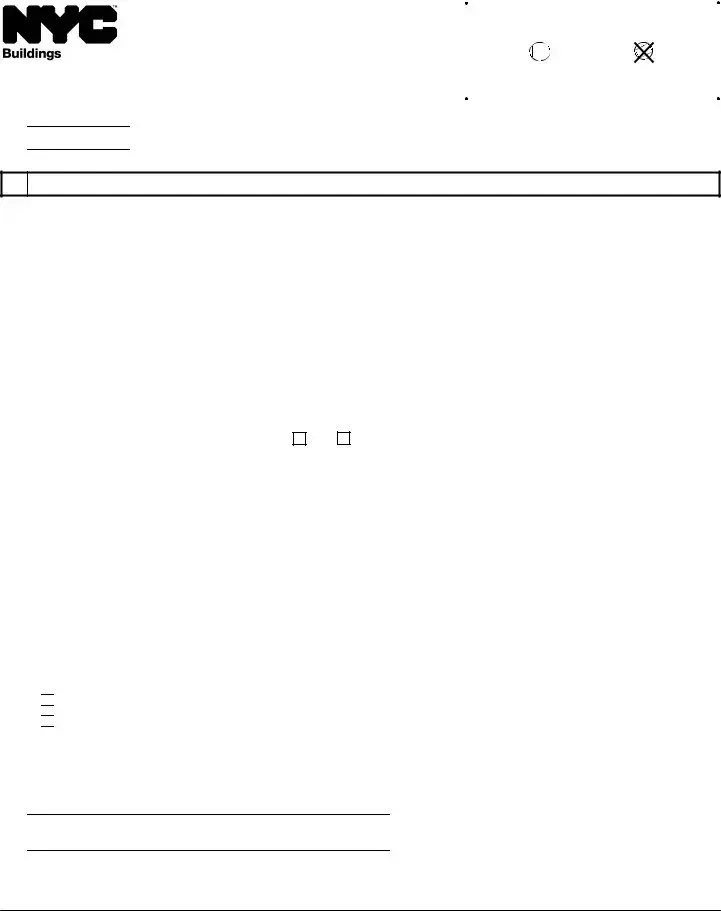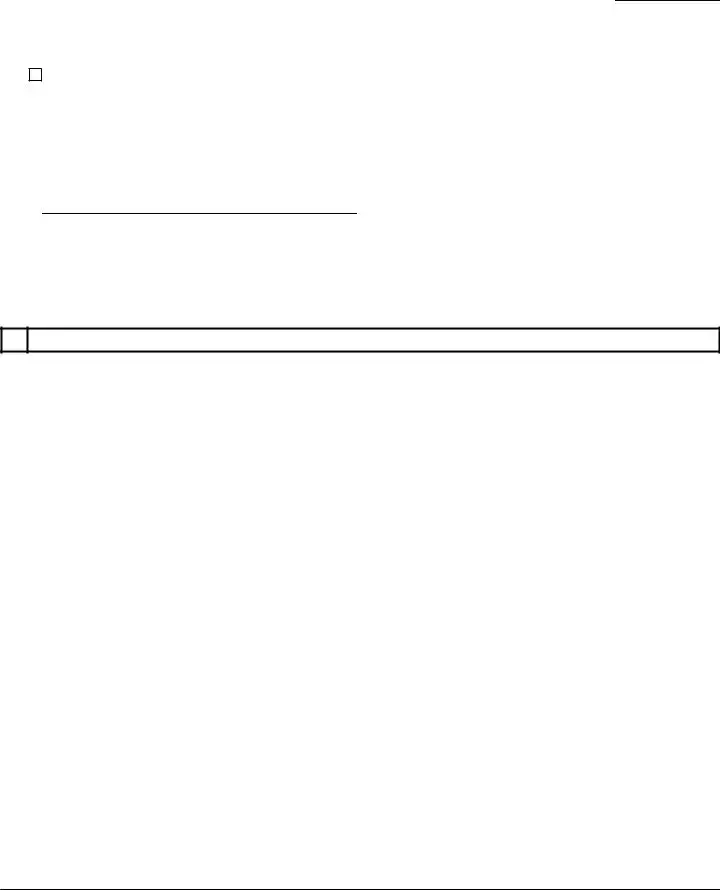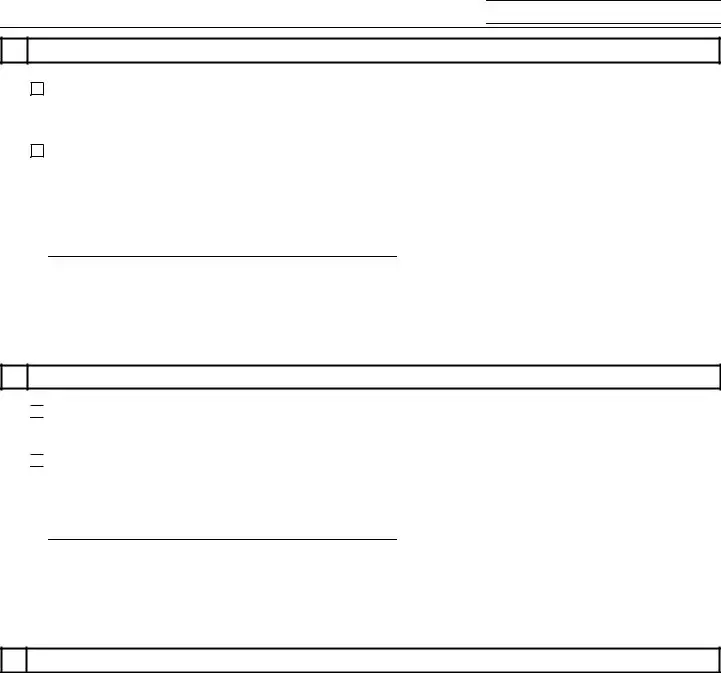The TR2 form is fundamentally similar to the TR1: Technical Report Statement of Responsibility form. Both are integral to the building permit application process in New York City, designed to ensure that construction projects comply with the city's building codes and regulations. The TR1 form is used by professionals to certify that the proposed work adheres to all relevant codes, much like how TR2 confirms the testing and compliance of concrete used in construction. Each document functions as a legally binding assertion by the signee that the information provided is accurate and that they accept responsibility for ensuring compliance with the specified standards.
Equally, the PW1: Plan/Work Approval Application shares similarities with the TR2 form as they are both required for construction project approvals. The PW1 form is the initial filing document for most construction projects, establishing the project's scope and identifying the key professionals involved. Like the TR2, which details the specifics of concrete testing for a project, the PW1 provides a comprehensive overview of the construction project, ensuring all work is properly declared and fits within legal and zoning regulations. Both forms are critical steps in obtaining the necessary permits for construction projects to proceed legally.
The TR3: Concrete Design Mix Technical Report also closely aligns with the TR2 form in its focus on concrete’s role within construction projects. While TR2 documents the testing and verification of concrete's actual performance on-site, TR3 details the planned specifications for the concrete mix to be used, including strength and composition. Both forms contribute to a framework ensuring that the concrete used in construction projects meets or exceeds New York City’s stringent safety and performance standards, thereby safeguarding structural integrity.
The Energy Efficiency Report is another document that, like the TR2, plays a crucial role in New York City's construction documentation landscape. This report assesses a building's energy consumption patterns and proposes measures to enhance efficiency. Similar to the TR2 form, which ensures that concrete testing complies with specific codes, the Energy Efficiency Report adheres to environmental and sustainability standards set by the city. Both documents reflect the effort to align construction practices with broader policy goals, such as safety, sustainability, and resilience.
The DOB NOW: Safety Facade Compliance Filing form, while different in content, is similar to the TR2 form in intent and function within regulatory compliance. It is a specific document submitted to the NYC Department of Buildings to prove that a building's facade has been inspected and is in safe condition. Like the TR2 form, which certifies concrete's compliance for a construction project, the facade compliance filing ensures that existing buildings maintain structural safety standards. Both forms are examples of the city's preventive measures to ensure public safety and the longevity of its infrastructure.
The TR8: Technical Report Statement of Responsibility for Energy Code Compliance is akin to the TR2 form in its assurance of compliance with specific New York City regulations, specifically relating to energy codes. The TR8 form is used by professionals to certify that the design of a building complies with the city's energy conservation code, similar to how the TR2 confirm concrete testing and compliance. Both documents serve as critical checkpoints for compliance in their respective domains, ensuring projects not only meet current standards but are also geared towards future sustainability and safety goals.
The ALT1: Application for Alteration of a Building is comparable to the TR2 in the way it serves as a formal request to the NYC Department of Buildings. While the ALT1 is used for modifications to an existing structure, rather than specifically for concrete testing, both forms are integral to ensuring that any changes or constructions are safely and legally executed. Each form requires detailed information and professional sign-offs to proceed, emphasizing the city's commitment to oversight and regulation in the building process.
The Construction Superintendent’s Log is a document that, similar to the TR2, plays a vital role in monitoring and ensuring compliance with safety and building standards throughout the construction process. Though not a form submitted to the NYC Department of Buildings, this log tracks daily activities on-site, including adherence to plans and any issues encountered. Like the TR2 form, which certifies the proper testing of concrete, the superintendent's log helps guarantee project compliance with all applicable codes and safety procedures, underlining the ongoing commitment to standard adherence.
The BIS Job Application is utilized during the initial stages of a building project, similar to how the TR2 form is used in concrete testing and verification. This application is part of the broader process to obtain permits, detailing the project specifics and the professionals involved. Both the BIS Job Application and the TR2 are essential for the legal and compliant advance of construction projects in New York City, ensuring every aspect, from concrete testing to overall design and implementation, meets the city’s rigorous standards.

 None of the tests indicated herein have been performed to date by the previously designated individual.
None of the tests indicated herein have been performed to date by the previously designated individual. Some of the tests indicated herein have been performed by the previously designated individual, as indicated in the attached report.
Some of the tests indicated herein have been performed by the previously designated individual, as indicated in the attached report.



 I certify I have reviewed the test results reported by the licensed concrete testing lab in section 6 above and found them to be in compli- ance with the approved construction documents.
I certify I have reviewed the test results reported by the licensed concrete testing lab in section 6 above and found them to be in compli- ance with the approved construction documents.
 I certify I have reviewed the test results reported by the licensed concrete testing lab in section 6 above and found them to be in compli- ance with the approved construction documents except as noted in the attached report (BC 1905.6.3.3)
I certify I have reviewed the test results reported by the licensed concrete testing lab in section 6 above and found them to be in compli- ance with the approved construction documents except as noted in the attached report (BC 1905.6.3.3)